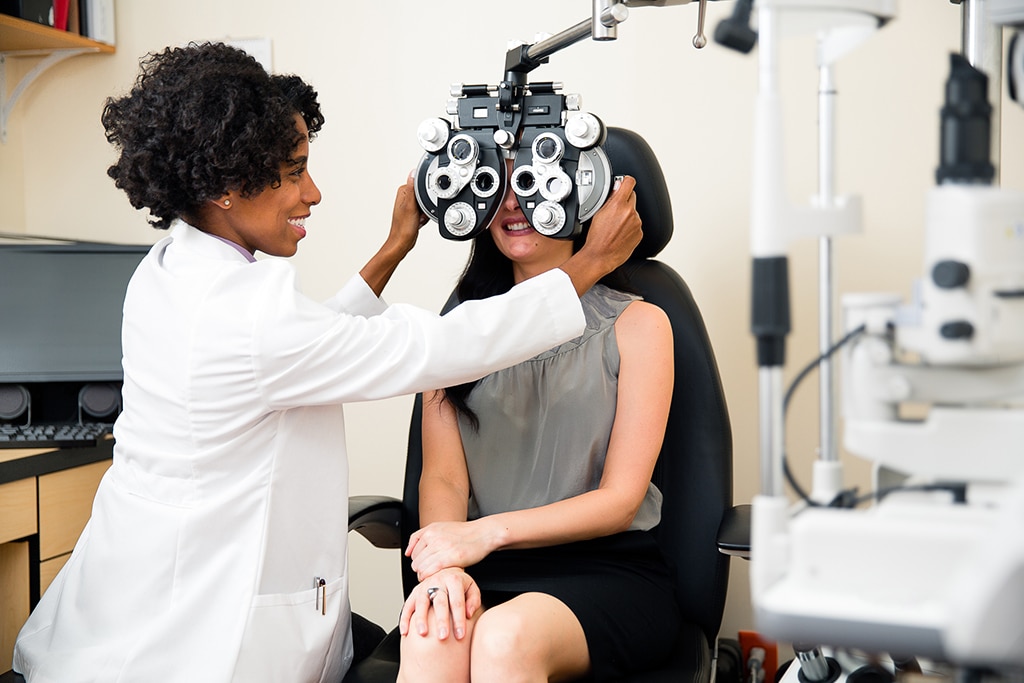The Importance of Regular Exams with an Eye Doctor Optometrist
The Importance of Regular Exams with an Eye Doctor Optometrist
Blog Article
Exploring the most recent Technical Improvements in Optometry and What They Mean for Optometrists
In the ever-evolving field of optometry, recent technical improvements are reshaping how practitioners come close to eye care. From the accuracy of Optical Coherence Tomography to the nuanced understandings used by AI-driven analysis tools, these technologies are setting brand-new criteria in client assessment and treatment. Teleoptometry is positioned to redefine ease of access, ensuring that proficiency goes beyond geographical constraints. As these improvements penetrate the practice, optometrists are confronted with the difficulty of welcoming these devices to boost client end results. Yet, the inquiry stays: how will these technological changes redefine the functions and responsibilities within the occupation?
Innovations in Diagnostic Tools
Progressing the area of optometry, innovations in diagnostic tools have reinvented the method eye treatment specialists analyze and identify aesthetic impairments and eye conditions. The previous years has observed substantial technical improvements, making it possible for more exact and extensive examinations.
An additional key development is the intro of sophisticated corneal topography systems, which map the surface curvature of the cornea with accuracy. These devices are especially valuable for suitable contact lenses and diagnosing corneal disorders. Furthermore, electronic retinal imaging has changed standard ophthalmoscopy, supplying detailed, breathtaking views of the retina that assist in comprehensive visual examinations.
The growth of wavefront aberrometry has additionally been critical, enabling the analysis of refractive errors with unequaled accuracy (Optometrist Chino). This technology assists in customizing restorative lenses and improving surgical end results for refractive surgical procedures. Collectively, these analysis improvements equip optometrists to provide premium individual care, guaranteeing very early intervention and customized treatment approaches, ultimately enhancing visual wellness results
AI in Individual Management
Building on the foundation of sophisticated diagnostic tools, the incorporation of man-made intelligence (AI) in patient management represents a transformative jump for optometry. AI systems are progressively utilized to improve performance, precision, and personalization in client treatment.
Furthermore, AI-driven systems assist in streamlined person interactions and administrative processes. Automated organizing, online examinations, and individualized follow-up strategies not only enhance individual satisfaction but likewise optimize time monitoring for practitioners. These systems can triage patients based upon the necessity of their problems, guaranteeing that those in essential need get prompt interest.
Moreover, AI boosts decision-making by offering optometrists with evidence-based suggestions and therapy paths. By integrating data from electronic health records, AI tools offer insights that educate professional decisions, lowering the danger of errors and enhancing individual end results. As AI proceeds to progress, its function in patient monitoring will likely increase, reshaping the landscape of optometric care.
Developments in Retinal Imaging
In the world of optometry, retinal imaging has seen remarkable technological innovations that are enhancing analysis capacities and person care. Developments such as Optical Comprehensibility Tomography (OCT) and fundus photography have actually revolutionized how optometrists assess the retina and imagine. OCT, particularly, offers high-resolution, cross-sectional photos of the retina, permitting the comprehensive evaluation of its layers. This ability is important for very early detection and management of conditions like glaucoma, diabetic retinopathy, and age-related macular degeneration.
Enhanced imaging techniques like OCT angiography are more refining diagnostic accuracy. Optometrist Chino. Such developments promote the identification of min retinal changes that could represent illness development.
Additionally, developments in man-made knowledge are increasing retinal imaging by making it possible for automatic evaluation of huge datasets. These systems assist optometrists in determining patterns indicative of pathology, thus enhancing diagnostic accuracy and efficiency. Jointly, these technologies are transforming retinal imaging right into a foundation of modern eye treatment, boosting end results and broadening healing opportunities.
Teleoptometry's Expanding Role
Teleoptometry is significantly ending up being an essential part of eye treatment, driven by advancements in data and diagnostic tools. As optometry embraces electronic makeover, teleoptometry helps with remote examinations, permitting optometrists to prolong their solutions past go to my blog standard boundaries. This is especially advantageous in rural and underserved areas where access to specialized eye care is usually limited. By leveraging high-resolution video clip conferencing and advanced retinal imaging, eye doctors can perform extensive eye tests from afar, guaranteeing prompt diagnosis and therapy.
The assimilation of expert system (AI) more boosts teleoptometry, making it possible for the analysis of aesthetic information and assisting in the detection of eye problems such as glaucoma and diabetic person retinopathy. AI-powered algorithms can quickly analyze complicated imaging data, supplying optometrists with useful understandings that reinforce professional decision-making.
Additionally, teleoptometry sustains connection of treatment via seamless combination with digital health documents (EHRs), enabling optometrists to maintain detailed client backgrounds. When seeking advice from with different experts., this guarantees that individuals receive individualized and constant care also.
Despite these benefits, obstacles stay, including ensuring data protection and handling individual expectations. Teleoptometry stands for a substantial stride in the direction of even more available, effective, and patient-centered eye treatment. As modern technology develops, its duty is positioned to expand additionally.

Future Fads in Eye Care
A myriad of innovative patterns is set to improve the future of eye treatment, driven by technical innovations and the developing needs of people. One significant pattern is the combination of man-made intelligence (AI) in diagnostics, which guarantees to boost the precision and effectiveness of eye assessments. AI algorithms can evaluate substantial amounts of data from retinal images, possibly discovering conditions like diabetic person retinopathy and glaucoma earlier than standard methods.
Additionally, personalized medication is gaining traction in optometry, with hereditary screening educating personalized treatment plans. This approach intends to maximize client results by tailoring treatments to private genetic accounts. Wearable innovation, such as smart contact lenses, is likewise imminent, using real-time surveillance of intraocular stress or glucose degrees, therefore providing continual understandings right into eye and systemic wellness.
The adoption of increased fact (AR) and digital fact (VR) in training and client education and learning is an additional emerging trend. These technologies provide immersive experiences that can boost understanding and abilities both anonymous for eye doctors and clients. As these patterns develop, eye doctors should stay abreast of technological innovations to give cutting-edge treatment, ensuring enhanced person results and satisfaction in the vibrant landscape of eye care.
Verdict

Jointly, these analysis developments equip optometrists to deliver superior patient treatment, making certain anonymous very early treatment and customized therapy approaches, eventually improving aesthetic wellness end results.

As these innovations continue to advance, optometrists should adapt and integrate them into practice, eventually optimizing operations performance and raising the criterion of eye treatment supplied to clients.
Report this page